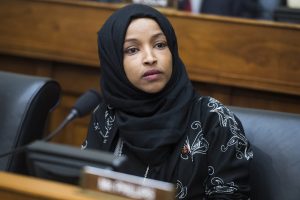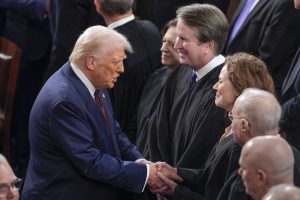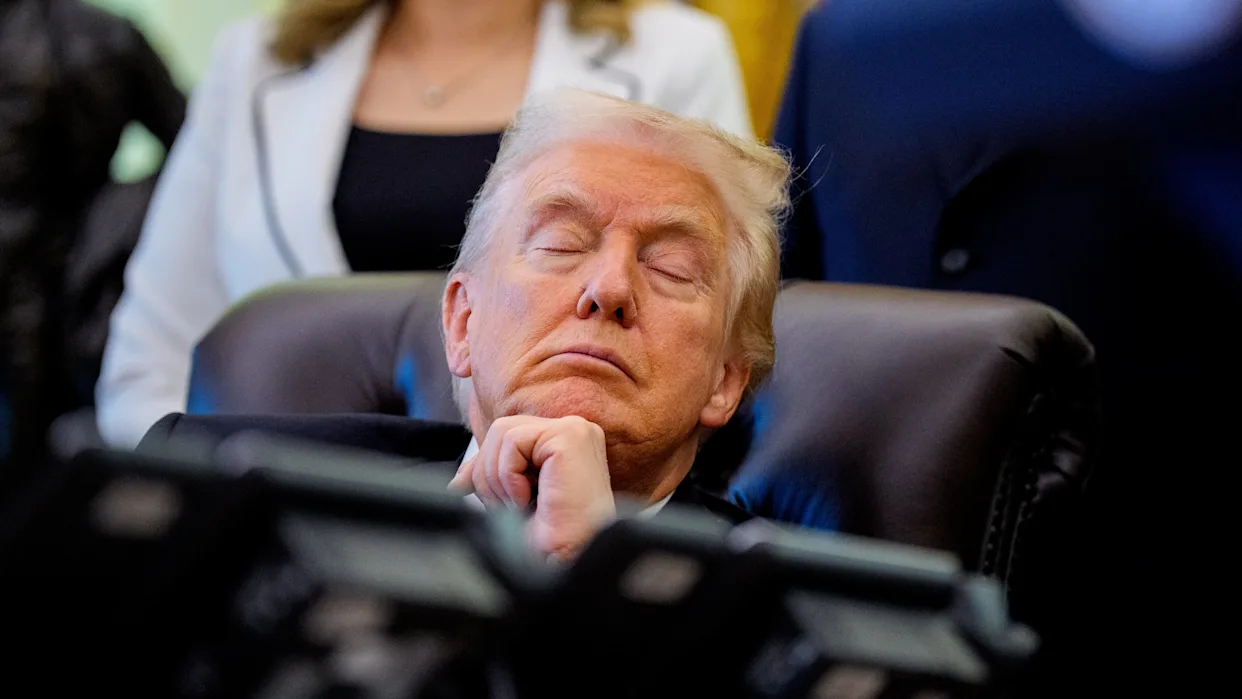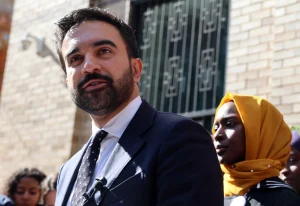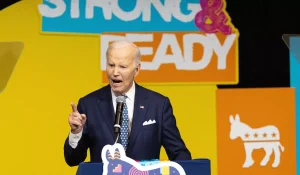The White House found itself on the defensive this week after President Donald Trump was seen appearing to slump in his chair and close his eyes during a televised Oval Office meeting, an incident that quickly went viral across social media and drew widespread media attention. The moment, which took place during a high-profile policy announcement, prompted questions about the president’s alertness and ability to engage during important events, drawing both criticism and ridicule from political opponents and online commentators.
The meeting, which was intended to announce reductions in the cost of weight-loss medications, featured the president alongside senior officials, including Mehmet Oz, the head of the Centers for Medicare & Medicaid Services. At various points during the presentation, Trump appeared to lean back in his chair with his eyes closed, prompting observers to speculate that he had fallen asleep. Social media quickly lit up with memes and commentary, noting the ironic twist that Trump—who has long derided his predecessor Joe Biden as “Sleepy Joe”—now appeared vulnerable to similar criticism. California Governor Gavin Newsom, for example, posted on social media, calling Trump “Dozy Don,” a nickname that immediately gained traction online.
The visual moment dominated discussion, even as Trump’s team tried to maintain focus on the substance of the announcement. According to White House officials, the policy presentation represented a historic effort to reduce costs for medications widely used by Americans struggling with obesity, diabetes, and other chronic conditions. Orally administered GLP-1 drugs, which are popular weight-loss medications, were set to be reduced to a monthly cost of $149, while injectable formulations were expected to cost $249. Administration officials emphasized that the reduction could save Americans significant sums while improving public health outcomes.
Despite the focus on policy, the optics of Trump appearing to nod off were impossible to ignore. Images of the president with his head tilted back circulated widely, with social media users and news outlets dissecting every frame. Some commentators interpreted the images as evidence of fatigue, while others framed it as a momentary lapse in posture that had been exaggerated by media coverage. Either way, the visuals quickly became the story itself, threatening to overshadow the policy achievement.
In response to the mounting criticism, the White House issued a forceful statement rejecting any suggestion that the president had fallen asleep. Officials emphasized that Trump had actively participated in the meeting, taking questions from the press and speaking at length about the new policy measures. “The President was not sleeping,” the statement declared. “In fact, he spoke throughout and took many questions from the press during this announcement, which represents a historic reduction in prices for Americans on two drugs that help those struggling with diabetes, heart disease, obesity, and other conditions.”
The statement went further, criticizing media coverage that focused on Trump’s posture rather than the substance of the announcement. Officials labeled reporting on the incident as “garbage” and accused liberal journalists of prioritizing a narrative about the president’s alertness over the policy achievements themselves. “This announcement by President Trump will save a significant amount of money and countless American lives,” the statement said. “Yet the failing, liberal media want to push a garbage narrative instead of covering it.”
The event also included an unexpected medical incident. During the gathering, an unnamed pharmaceutical executive collapsed in the Oval Office, prompting a scramble by aides and medical personnel. Photographs captured Trump standing nearby while Dr. Oz and other officials rushed to provide assistance. Health Secretary Robert F. Kennedy Jr. was also seen exiting the frame as emergency aid was administered. Officials later confirmed that the individual had recovered after receiving medical attention, but the combination of the collapse and Trump’s posture contributed to a heightened sense of drama surrounding the event.
Media analysts and commentators quickly noted the tension between optics and agenda. While the administration sought to highlight the cost reductions for weight-loss drugs—a move aimed at addressing pressing public health concerns—the images of the president reclining with closed eyes became a defining visual for the event. Critics argued that such imagery undermines the credibility of the announcement, particularly when it appears during a highly staged, carefully planned policy rollout. In modern politics, visuals often resonate more strongly than the details of policy, and many observers suggested that this moment would linger in public consciousness more than the policy itself.
The president’s age was another factor that amplified the coverage. Trump, now older than Joe Biden was when he assumed the presidency in 2020, faced renewed scrutiny about stamina, energy, and the physical demands of the office. Political opponents emphasized the irony of the situation, noting that Trump had built part of his political brand on energy, vigor, and the ability to outperform his peers. The apparent contradiction between Trump’s public persona and the images captured during the meeting made the story particularly compelling for commentators and satirists alike.
Supporters of the president, meanwhile, sought to redirect attention to the policy achievement itself. They argued that the reductions in medication costs represented a tangible benefit for millions of Americans and were emblematic of a larger agenda to reduce healthcare expenses. Administration officials emphasized that Trump had actively participated in the event, answering questions, engaging with officials, and speaking on camera, pointing out that a momentary lapse in posture should not detract from the broader significance of the policy.
Still, the episode highlighted the challenges of messaging in the age of social media, where a single image or video clip can dominate the narrative regardless of context. Experts on political communication suggested that the incident serves as a case study in how optics and framing can shape public perception. Even when policy achievements are significant, moments perceived as personal lapses—whether real or exaggerated—can dominate headlines, memes, and public discourse.
The episode also raises questions about how the White House manages the president’s public appearances. Critics argue that staging, camera angles, and event pacing should account for the president’s comfort and alertness, particularly during televised or widely covered events. The combination of the collapsed attendee and Trump’s posture created a compounded effect, drawing attention away from the policy itself and toward questions about preparedness, situational awareness, and the president’s physical presence.
Looking forward, the administration faces a dual challenge. On one hand, it must continue to promote and implement policy victories, such as the reductions in weight-loss medication costs. On the other, it must manage public perception, countering narratives about fatigue or diminished engagement. The White House’s aggressive response suggests a strategic calculation that controlling the narrative on both fronts is essential to maintaining political momentum and public confidence.
Observers note that the stakes are high because the visual impression of a president—particularly an older president—can have lasting effects on public perception and political discourse. Moments that appear trivial or fleeting in real time can become defining episodes in a political career when amplified by media coverage and online commentary. For Trump, who has consistently positioned himself as energetic, assertive, and capable of outpacing opponents, the incident represented a notable challenge to the image carefully cultivated over decades.
The episode also underscores the tension between policy substance and media spectacle. While the announcement on drug prices could have been celebrated as a meaningful policy achievement with measurable impacts on American lives, the focus quickly shifted to optics. Social media users and commentators debated the significance of the president’s posture, with some mocking the moment, others criticizing media framing, and still others defending the president’s engagement in the event.
In conclusion, the Oval Office meeting highlighted several intersecting dynamics in contemporary American politics: the significance of public perception, the impact of visual media on narrative formation, and the ongoing tension between policy substance and political optics. For the Trump administration, the incident has prompted both defensive messaging and renewed focus on media strategy. Officials emphasize that the president was fully engaged in the policy announcement and that the health benefits and financial savings resulting from the drug price reductions remain the central story.
At the same time, the images from the event are likely to remain a focal point of discussion, particularly among political opponents and media commentators. The episode serves as a reminder that in the age of instant information and social media amplification, the visual record often carries as much weight as the policy itself. As the administration moves forward, balancing the promotion of tangible policy accomplishments with careful management of optics will remain a critical challenge.
Ultimately, the event encapsulates the challenges facing modern political leadership. Leaders must not only deliver policy outcomes but also navigate the demands of public presentation and media scrutiny. For President Trump, the Oval Office incident serves as a vivid illustration of how quickly the narrative can shift, and how closely the public and media monitor every gesture, posture, and expression. While the policy announcement on medication pricing could provide significant benefits to Americans, the viral images of the president reclining in his chair have ensured that the story will be remembered as much for its optics as for its substance.

Emily Johnson is a critically acclaimed essayist and novelist known for her thought-provoking works centered on feminism, women’s rights, and modern relationships. Born and raised in Portland, Oregon, Emily grew up with a deep love of books, often spending her afternoons at her local library. She went on to study literature and gender studies at UCLA, where she became deeply involved in activism and began publishing essays in campus journals. Her debut essay collection, Voices Unbound, struck a chord with readers nationwide for its fearless exploration of gender dynamics, identity, and the challenges faced by women in contemporary society. Emily later transitioned into fiction, writing novels that balance compelling storytelling with social commentary. Her protagonists are often strong, multidimensional women navigating love, ambition, and the struggles of everyday life, making her a favorite among readers who crave authentic, relatable narratives. Critics praise her ability to merge personal intimacy with universal themes. Off the page, Emily is an advocate for women in publishing, leading workshops that encourage young female writers to embrace their voices. She lives in Seattle with her partner and two rescue cats, where she continues to write, teach, and inspire a new generation of storytellers.


